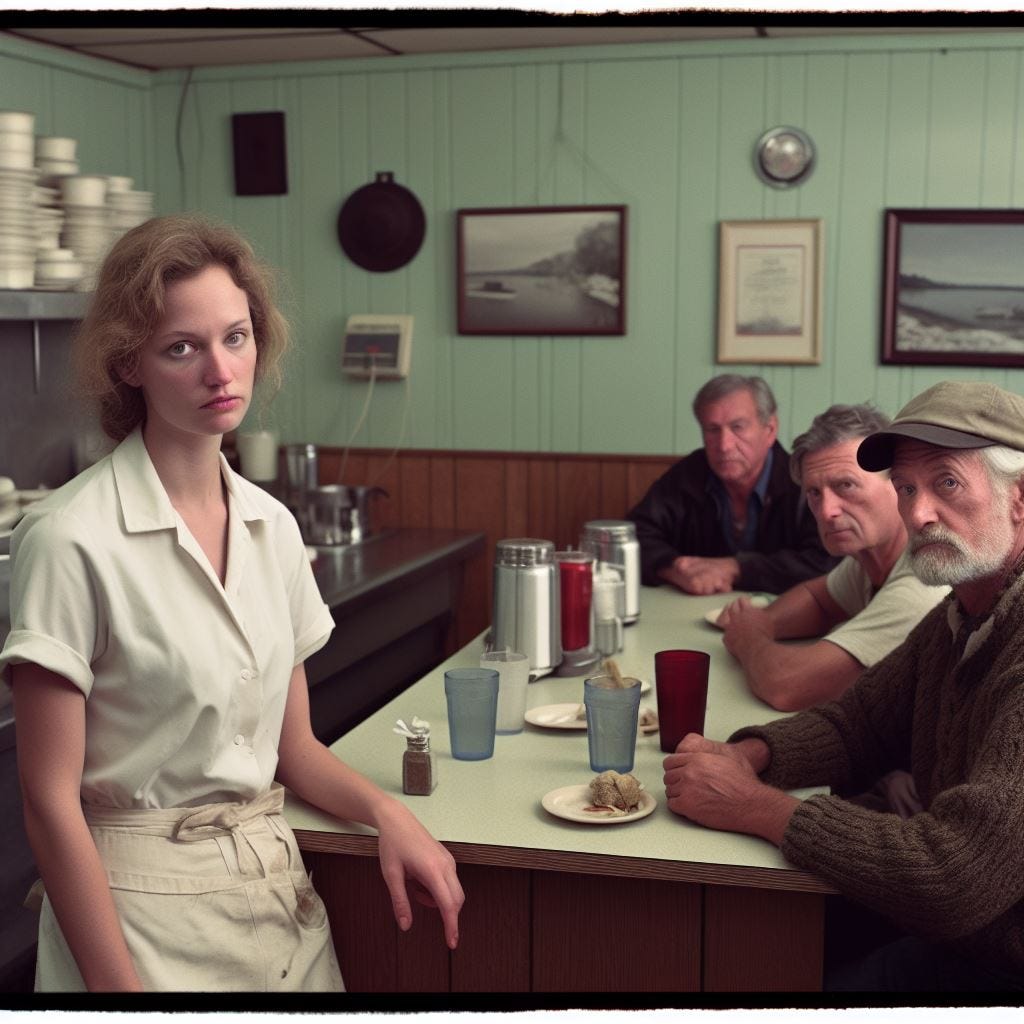The Bots are here. I kind of like them, though I still feel a little uncomfortable saying it. Many of my writing colleagues just gasped in disgust and yelled, “AI is undermining humanity.” And while it may be valid to some extent, I believe that how we use AI determines if we’re being undermined. I’ve been experimenting with using AI for my creative writing. When I say that, people assume it means that I have AI generate my stories. What I actually mean is that I have been using it to explore and fine-tune my writing.
I upload a story and ask it for a critique—which it returns to me in less than 30 seconds. I ask it to outline a passage, tell me what parts are underwritten, where I go off on tangents, grammar, etc…. It’s incredibly useful for understanding structure elements and pointing out deviations from the norm.
Most recently, I’ve been writing a collection of short stories that take place on the coast of Maine in the mid-80s. One of my main characters, Tabitha Gris, works in a small-town diner where she interacts with much of the community. Like most diners, this one has a group of regulars and Tabitha calls them, The Three Amigos.
Struggling to imagine the setting, I used the free Bing Image Generator to create an image that might goose my imagination. The 80s are already four decades in the past, y’all, so my memory of that time needed some jogging (I could also use some jogging). I asked Bing to “create an image of a thin middle-aged woman working in a rural diner in Maine during the early 1980s. In the diner, three retired fishermen are sitting at a lunch counter. The mood is somber, and the image should look like a polaroid.”
It sent back four images, and this one (above) is the best. The rest had problems like the wrong number of fingers, and the Three Amigos were in suits or had black hair. This was a standout image for about a million reasons. The woman, though younger than my character, has the right attitude. She isn’t smiling, she isn’t in a strong posture, but she is at the center of the scene—in control of everyone in the diner while wearing a white polyester shirt with a dingy cotton apron.
I also like how the three men are in various states of consumption (is that the right word?). One looks like he just finished a cup of black coffee and a single plain donut, while the other two are waiting for their fried eggs, white toast, and bacon.
The details that I notice in this picture are the straw carousels on the counter, the thick-bottomed diner dishes, the plastic cups, the clock with the cord hanging down (cords! Everything had a cord back then), the poorly arranged and muted photographs with the thin wood frames, the two-tone beadboard on the walls, and the shitty drop ceiling.
What the picture did was put a visual to the mood I outlined. As a result, it ignited whole memory sets—the time I stole a napkin holder from Moody’s Diner in Waldoboro, the day we got the swivel attachment for the corded phone so we wouldn’t have to untwist the phone by hanging it over the porch railing and watch the handle of the phone spin like an eight-year-old on a swing, listening to the radio on a giant boom box that bankrupted me when I had to buy eight D-cell batteries, Wonderwoman Underoos, holding the TV antenna so we could get reception for the evening news, TV’s without remotes.
You get the idea. The image generator is a tool for fast-tracking immersion into a scene. I’m thinking about the scene in Harry Potter when Dumbledore leaves Harry alone in his office with the pensieve, a giant bowl of memories. Harry, always curious, sticks his head in the bowl and helps himself to some of Dumbledore’s own memories. He sees the memories from another perspective and time. It’s a lot like a magical version of the internet.
I’m always looking for ways to maintain flow, and while I don’t use AI to write for me, I do let it open doorways so I can write better.
-n






She has the right attitude. Thanks for giving me another way to look at AI.
I love this. It’s so easy to spiral into tangents when it comes to research for a story. And even when it’s research based in times we’ve already lived! The idea of using an image to invoke memory and inspire story is something artists have been doing for a long time. I see nothing wrong with using AI to generate the same.
Just last night, as I was discovering more and more about my main character, I found myself spiraling down a rabbit hole of google searches about the early 2000s, about German-American heritage, about urns and coffee and artwork. All things I have first hand experience with, but my mind was so muddled that it felt like nothing was working. It’s incredible to think that AI could help set my head straight. I have to try this. No more mind muddles!